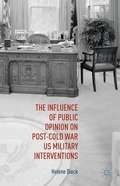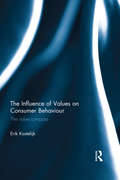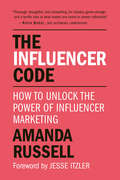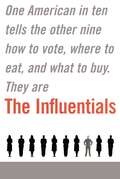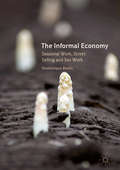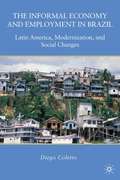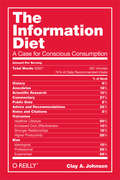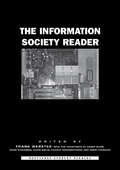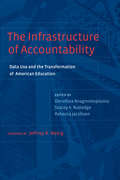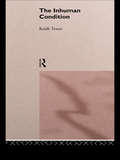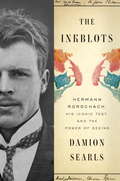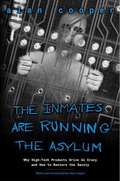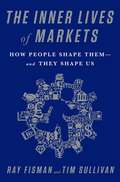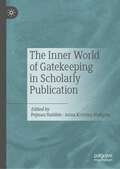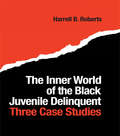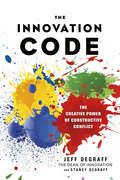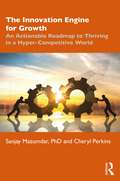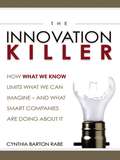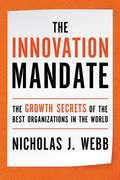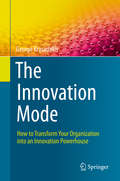- Table View
- List View
The Influence of Demographic Stochasticity on Population Dynamics
by Tommaso BiancalaniThe dynamics of population systems cannot be understood within the framework of ordinary differential equations, which assume that the number of interacting agents is infinite. With recent advances in ecology, biochemistry and genetics it is becoming increasingly clear that real systems are in fact subject to a great deal of noise. Relevant examples include social insects competing for resources, molecules undergoing chemical reactions in a cell and a pool of genomes subject to evolution. When the population size is small, novel macroscopic phenomena can arise, which can be analyzed using the theory of stochastic processes. This thesis is centered on two unsolved problems in population dynamics: the symmetry breaking observed in foraging populations and the robustness of spatial patterns. We argue that these problems can be resolved with the help of two novel concepts: noise-induced bistable states and stochastic patterns.
The Influence of Parental Attitudes and Social Environment on the Personality Development of the Adolescent Blind
by Vita Stein SommersThe author's experience with visually handicapped children and young adults in schools is richly used in this study of the influence Of parental attitudes and social environment on the personality development of the adolescent blind.
The Influence of Public Opinion on Post–Cold War US Military Interventions
by Helene DieckIs the American president free to wage a war? What is his leeway with respect to public opinion? The book explores these and other essential questions in understanding post—Cold War and post-9/11 conflicts: interventions characterized by their long duration in distant countries with unclear strategic interests. If public opinion often initially tolerates the President embarking on a military intervention, that support is difficult to maintain in the long term when the troops are on the battlefield and victory appears improbable. In order to maintain public support as long as possible for foreign interventions, the United States often adapts military strategy and tactics to the detriment of the desired objectives. As a result, and contrary to the predominant literature, this qualitative study argues that public opinion has major impact on military interventions.
The Influence of Values on Consumer Behaviour: The value compass
by Erik KostelijkSubstantial progress has been made in the conceptualization of values within psychology. The importance of values is also acknowledged in marketing, and companies use values to describe the core associations of their brand. Yet despite this, the values concept has received limited attention in marketing theory. The Influence of Values on Consumer Behaviour aims to bridge the gap between the conceptual progress of values in psychology, and the current practice in marketing and branding literature. It proposes the ‘Value Compass’, a comprehensive value system that is cross-culturally applicable to consumer behaviour and brand choice. The values concept is used in psychology to identify the motivations underlying behaviour, a concept that marketers have borrowed to define brand values. This has led to conceptual confusion. Whereas in psychology the values system is perceived as an integrated structure, in marketing, values are treated as abstract motivations that give importance to the benefits of consumption. Attention in marketing has shifted away from brand values toward brand personality, a set of human characteristics associated with a brand. Despite its popularity, brand personality has limitations in explaining consumer behaviour, while the potential merits of a brand values concept have remained largely unexplored. The book presents a meaningful alternative to the brand personality concept and promotes the benefits of using the Value Compass for assessing the effects of brand values and personal values on consumer choice. As such, it will be essential reading for academics and postgraduate students in the fields of marketing, consumer psychology, branding, consumer choice behaviour and business studies.
The Influencer Code: How to Unlock the Power of Influencer Marketing
by Amanda RussellThe Influencer Code is the essential reference for any company looking to leverage the power of influencers to elevate their brand and grow their business.From Fortune 500s to local fitness studios, whether you offer financial services or sell donuts, reaching today's consumers is more complicated than ever. More and more, marketers are reaching out to people who style themselves "influencers": those people who have a big—and, more importantly—loyal audience ready to hear what they have to say about anything.Yet despite "influencer marketing" fast becoming one of the biggest buzz terms of the decade, it couldn't be more misunderstood.Written by an accomplished entrepreneur, professor, and award-winning YouTube star, The Influencer Code breaks down the biggest myths that brands are getting wrong and shows you how to get it right by defining and showcasing what true influencer marketing is and how to leverage it to achieve your business goals in a simple yet powerful 3-step code.The Influencer Code simplifies the complex world of influencer marketing, covering how to research, evaluate, and employ the right influencers for their markets, as well as how to legally and strategically integrate them into marketing campaigns to achieve specific goals.The future of marketing depends on forming authentic partnerships between brands and influencers. The go-to resource for all things influencer marketing, The Influencer Code is your shortcut to making that future a reality.
The Influentials
by Edward Keller Jonathan BerryOne American in ten tells the other nine how to vote, where to eat, and what to buy. They are The Influentials Who are they? The most influential Americans -- the ones who tell their neighbors what to buy, which politicians to support, and where to vacation -- are not necessarily the people you'd expect. They're not America's most affluent 10 percent or best-educated 10 percent. They're not the "early adopters," always the first to try everything from Franco-Polynesian fusion cooking to digital cameras. They are, however, the 10 percent of Americans most engaged in their local communities...and they wield a huge amount of influence within those communities. They're the campaigners for open-space initiatives. They're church vestrymen and friends of the local public library. They're the Influentials...and whether or not they are familiar to you, they're very well known to the researchers at RoperASW. For decades, these researchers have been on a quest for marketing's holy grail: that elusive but supremely powerful channel known as word of mouth. What they've learned is that even more important than the "word" -- what is said -- is the "mouth" -- who says it. They've identified, studied, and analyzed influence in America since the Standard Oil Company of New Jersey (now Exxon) hired Elmo Roper himself to develop a model for identifying opinion leaders, and in The Influentials, they are finally ready to share their results. A few samples: Influentials have been the "early majority" -- leading indicators of what Americans will be buying -- for more than five decades, from choosing energy-efficient cars in the 1970s to owning computers in the 1980s to adopting 401(k)s and IRAs in the 1990s to using the Internet and cell phones today. Influentials have led the way in social development as well, from the revival of self-reliance (in managing their own health care, investments, and consumption) to mass skepticism about the marketing claims of everything from breakfast food to politicians. Although America's Influentials have always been powerful, they've never been more important than now. Today, a fragmented market has made it possible for Influentials to opt out of mass-message advertising, which means that a different route must be taken to capture their hearts and minds. The Influentials is a map for that route, a map that explains who these people are, how they exercise influence, and how they can be targeted. The Influentials features a series of rules and guidelines for marketing to Influentials; case studies of products that have prospered because of Influential marketing (and products that have failed because they lacked it); a history of the phenomenon...and why Influentials are more influential today than ever; and profiles of twelve real-life Influentials. Both an intellectual adventure and a hands-on marketing manual, The Influentials is an extraordinary gold mine of information and analysis that no business can afford to ignore.
The Informal Economy
by Dominique BoelsThis book examines the nature and regulation of the informal economy by means of a collective case study in a highly regulated Western country. The book, situated at the intersection of criminology and sociology, investigates the relation between formal, informal and criminal work in three urban and rural labour markets (seasonal work, street trade and sex work) alongside the impact of state policies on informality. Boels uncovers the differential position authorities take regarding these labour markets, notwithstanding the presence of informality and often vulnerable position of workers in each one of them. With a distinctive focus on informal workers, and through in-depth interviews, this study explores the life and work of informal workers, including their experiences with regulators, their motivations for working informally and their perceptions of state policy. In short, this book gives a voice to often ignored but crucial participants of the informal economy. The detailed discussion of the results and the links to theoretical frameworks will ensure this book is of particular interest to scholars of urban economics and governance, criminology, and sociology.
The Informal Economy and Employment in Brazil: Latin America, Modernization, and Social Changes
by Diego ColettoThis book presents some in-depth cases regarding specific informal economic activities in Brazil. Using an ethnographic approach, the author shows the social and economic processes that allow the informal economy to be reproduced, revealing the complex and heterogeneous relations between the formal and the informal parts of economy.
The Information Diet
by Clay A. JohnsonThe modern human animal spends upwards of 11 hours out of every 24 in a state of constant consumption. Not eating, but gorging on information ceaselessly spewed from the screens and speakers we hold dear. Just as we have grown morbidly obese on sugar, fat, and flour--so, too, have we become gluttons for texts, instant messages, emails, RSS feeds, downloads, videos, status updates, and tweets. We're all battling a storm of distractions, buffeted with notifications and tempted by tasty tidbits of information. And just as too much junk food can lead to obesity, too much junk information can lead to cluelessness. The Information Diet shows you how to thrive in this information glut--what to look for, what to avoid, and how to be selective. In the process, author Clay Johnson explains the role information has played throughout history, and why following his prescribed diet is essential for everyone who strives to be smart, productive, and sane. In The Information Diet, you will: Discover why eminent scholars are worried about our state of attention and general intelligence Examine how today's media--Big Info--give us exactly what we want: content that confirms our beliefs Learn to take steps to develop data literacy, attention fitness, and a healthy sense of humor Become engaged in the economics of information by learning how to reward good information providers Just like a normal, healthy food diet, The Information Diet is not about consuming less--it's about finding a healthy balance that works for you
The Information Diet: A Case for Conscious Comsumption
by Clay A. JohnsonThis is a softcover version of the title released in 2011; there is no new material.The modern human animal spends upwards of 11 hours out of every 24 in a state of constant consumption. Not eating, but gorging on information ceaselessly spewed from the screens and speakers we hold dear. Just as we have grown morbidly obese on sugar, fat, and flour—so, too, have we become gluttons for texts, instant messages, emails, RSS feeds, downloads, videos, status updates, and tweets.We're all battling a storm of distractions, buffeted with notifications and tempted by tasty tidbits of information. And just as too much junk food can lead to obesity, too much junk information can lead to cluelessness. The Information Diet shows you how to thrive in this information glut—what to look for, what to avoid, and how to be selective. In the process, author Clay Johnson explains the role information has played throughout history, and why following his prescribed diet is essential for everyone who strives to be smart, productive, and sane.In The Information Diet, you will:Discover why eminent scholars are worried about our state of attention and general intelligenceExamine how today’s media—Big Info—give us exactly what we want: content that confirms our beliefsLearn to take steps to develop data literacy, attention fitness, and a healthy sense of humorBecome engaged in the economics of information by learning how to reward good information providersJust like a normal, healthy food diet, The Information Diet is not about consuming less—it’s about finding a healthy balance that works for you
The Information Society Reader (Routledge Student Readers)
by Frank WebsterThere has been much debate over the idea of 'the information society'. Some thinkers have argued that information is becoming the key ordering principle in society, whereas others suggest that the rise of information has been overstated. Whatever the case, it cannot be denied that 'informization' has produced vast changes in advanced societies. The Information Society Reader pulls together the main contributions to this debate from some of the key figures in the field. Major topics addressed include:* post-industrialism* surveillance* transformations* the network society* democracy* digital divisions* virtual relations.With a comprehensive introduction from Frank Webster, selections from Manuel Castells, Anthony Giddens, Michel Foucault and Christopher Lasch amongst others, and section introductions contextualising the readings, this book will be an invaluable resource for students and academics studying contemporary society and all things cyber.
The Infrastructure of Accountability: Data Use and the Transformation of American Education
by Jeffrey R. Henig Rebecca Jacobsen Dorothea Anagnostopoulos Stacey A. RutledgeThe Infrastructure of Accountability brings together leading and emerging scholars who set forth an ambitious conceptual framework for understanding the full impact of large-scale, performance-based accountability systems on education. Over the past 20 years, schools and school systems have been utterly reshaped by the demands of test-based accountability. Interest in large-scale performance data has reached an unprecedented high point. Yet most education researchers focus primarily on questions of data quality and the effectiveness of data use. In this bold and thought-provoking volume, the contributors look beneath the surface of all this activity to uncover the hidden infrastructure that supports the production, flow, and use of data in education, and explore the impact of these large-scale information systems on American schooling. These systems, the editors note, "sit at the juncture of technical networks, work practices, knowledge production, and moral order.
The Infrastructure of Accountability: Data Use and the Transformation of American Education
by Dorothea Anagnostopoulos, Stacey A. Rutledge, and Rebecca JacobsenThe Infrastructure of Accountability brings together leading and emerging scholars who set forth an ambitious conceptual framework for understanding the full impact of large-scale, performance-based accountability systems on education. Over the past 20 years, schools and school systems have been utterly reshaped by the demands of test-based accountability. Interest in large-scale performance data has reached an unprecedented high point. Yet most education researchers focus primarily on questions of data quality and the effectiveness of data use. In this bold and thought-provoking volume, the contributors look beneath the surface of all this activity to uncover the hidden infrastructure that supports the production, flow, and use of data in education, and explore the impact of these large-scale information systems on American schooling. These systems, the editors note, &“sit at the juncture of technical networks, work practices, knowledge production, and moral order.
The Inhuman Condition
by Keith TesterFirst published in 2004. Routledge is an imprint of Taylor & Francis, an informa company.
The Inkblots: Hermann Rorschach, His Iconic Test, and the Power of Seeing
by Damion SearlsThe captivating, untold story of Hermann Rorschach and his famous inkblot test In 1917, working alone in a remote Swiss asylum, psychiatrist Hermann Rorschach devised an experiment to probe the human mind: a set of ten carefully designed inkblots. For years he had grappled with the theories of Freud and Jung while also absorbing the aesthetic movements of the day, from Futurism to Dadaism. A visual artist himself, Rorschach had come to believe that who we are is less a matter of what we say, as Freud thought, than what we see.After Rorschach’s early death, his test quickly made its way to America, where it took on a life of its own. Co-opted by the military after Pearl Harbor, it was a fixture at the Nuremberg trials and in the jungles of Vietnam. It became an advertising staple, a cliché in Hollywood and journalism, and an inspiration to everyone from Andy Warhol to Jay Z. The test was also given to millions of defendants, job applicants, parents in custody battles, and people suffering from mental illness or simply trying to understand themselves better. And it is still used today.In this first-ever biography of Rorschach, Damion Searls draws on unpublished letters and diaries and a cache of previously unknown interviews with Rorschach’s family, friends, and colleagues to tell the unlikely story of the test’s creation, its controversial reinvention, and its remarkable endurance—and what it all reveals about the power of perception. Elegant and original, The Inkblots shines a light on the twentieth century’s most visionary synthesis of art and science.
The Inmates are Running the Asylum
by Alan CooperImagine, at a terrifyingly aggressive rate, everything you regularly use is being equipped with computer technology. Think about your phone, cameras, cars-everything-being automated and programmed by people who in their rush to accept the many benefits of the silicon chip, have abdicated their responsibility to make these products easy to use. The Inmates Are Running the Asylum argues that the business executives who make the decisions to develop these products are not the ones in control of the technology used to create them. Insightful and entertaining, The Inmates Are Running the Asylum uses the author's experiences in corporate America to illustrate how talented people continuously design bad software-based products and why we need technology to work the way average people think. Somewhere out there is a happy medium that makes these types of products both user and bottom-line friendly; this book discusses why we need to quickly find that medium.
The Inner Lives of Markets: How People Shape ThemAnd They Shape Us
by Tim Sullivan Ray FismanWhat is a market? To most people it is a shopping center or an abstract space in which stock prices vary minutely. In reality, a market is something much more fundamental to being human, and it affects not just the price of tomatoes but the boundaries of everything we value.Reading the newspapers these days, you could be forgiven for thinking that markets are getting ever more efficient-and better. But as Tim Sullivan and Ray Fisman argue in this insightful book, that view is far from complete. For one thing, efficiency isn't always a good thing-illegal markets are very often more efficient than legal ones, because they are free of concern for laws and human rights. But even more importantly, the chatter about efficiency has obscured a much broader conversation about what kind of economic exchange we actually want. Every regulation, every sticker price, and every sale is part of an ever-changing ecosystem-one that affects us as much as we affect it.By tracing 50 years of economic thought on this subject, Fisman and Sullivan show how markets have evolved-and how we can keep making them better. This leads to fascinating and surprising insights, such as:Why your 10,000 used car is likely to sell for 2,000 or less;Why you should think twice before buying batteries on Amazon; andWhy it's essential that healthy people buy medical insurance.In the end, The Inner Lives of Markets argues for a new way of thinking about how you spend your money-it shows that every transaction you make is part of a grand social experiment. We are all guinea pigs running through a lab maze, and the sooner we realize it, the more effectively we can navigate the path we want.
The Inner World of Gatekeeping in Scholarly Publication
by Pejman Habibie Anna Kristina HultgrenThis edited book focuses on the certifiers of scientific knowledge, bringing together experts in a variety of areas in Applied Linguistics to address the complex topic of editing and reviewing in writing for scholarly publication. Drawing on insider perspectives, the authors bring to the fore personal histories, narratives and first-hand accounts of editors and reviewers and help paint a richer and more nuanced picture of the discourses, practices, experiences, success stories, failures, and challenges that frame and shape trajectories of both Anglophone and English as an additional language (EAL) scholars in adjudicating and accrediting academic output. This book will be of interest to researchers, practitioners, supervisors, writing mentors, early-career scholars and graduate students in a variety of fields.
The Inner World of the Black Juvenile Delinquent: Three Case Studies
by Harrell B. RobertsFirst published in 1987. Routledge is an imprint of Taylor & Francis, an informa company.
The Innovation Code: The Creative Power of Constructive Conflict
by Jeff DeGraff Staney DeGraffThe Innovation CodeThe Creative Power of Constructive ConflictHarmony is sublime in music but deadly to innovation. The only way to create new, hybrid solutions is to clash. Innovation happens when we bring people with contrasting perspectives and complementary areas of expertise together in one room. We innovate best with people who challenge us, not people who agree with us. It sounds like a recipe for chaos and confusion. But in The Innovation Code, Jeff DeGraff, dubbed the "Dean of Innovation," and Staney DeGraff introduce a simple framework to explain the ways different kinds of thinkers and leaders can create constructive conflict in any organization. This positive tension produces ingenious solutions that go far beyond "the best of both worlds." Drawing on their work with nearly half of the Fortune 500 companies, the DeGraffs help you harness the creative energy that arises from opposing viewpoints. They identify four contrasting styles of innovator—the Artist, the Engineer, the Athlete, and the Sage—and include exercises and assessments for building, managing, and embracing the dynamic discord of a team that contains all four. You can also figure out where you fit on the continuum of innovator archetypes. Using vivid examples, The Innovation Code offers four steps to normalize conflict and channel it to develop something completely new. By following these simple steps, you will get breakthrough innovations that are both good for you and your customers. This is a rigorous but highly accessible guide for achieving breakthrough solutions by utilizing the full—and seemingly contradictory—spectrum of innovative thinking.
The Innovation Engine for Growth: An Actionable Roadmap to Thriving in a Hyper-Competitive World
by Sanjay Mazumdar Cheryl PerkinsWritten by experts on innovation and growth, this book provides the necessary tools to systematically develop and sustain profitable innovation pipelines. In a hypercompetitive global market, businesses must innovate to survive; yet the failure rate for innovation is extremely high. Strategists and thought leaders, Cheryl Perkins and Dr. Sanjay Mazumdar, offer a sophisticated yet practical approach for implementing successful innovation. Leveraging thought-provoking questions and powerful templates, the book outlines how companies can leverage core strengths, build internal innovation capabilities, partner effectively, and identify the promising areas to pursue. In addition, the book highlights emerging innovations in several major industries, providing fodder to fuel creative thinking and exploration of possible applications across a variety of different industries. Managers and leaders will welcome the innovation insights and examples, as well as the templates to build an organization’s plan to diagnose patterns of innovation, identify opportunities, and apply emerging innovations in their own industries and businesses.
The Innovation Killer: How What We Know Limits What We Can Imagine -- and What Smart Companies Are Doing About It
by Cynthia Barton RabeKnowledge is good, preaches the inscription under the statue of college founder Emil Faber in the film Animal House. But as valid as that declamation may be at a university, in the corporate world what passes for knowledge can be a killer. Companies and teams rely on what we know and the way we do things here to speed decision making and maintain a sense of order. But progress demands change, risk taking, and occasionally, revolution. Processes must be overhauled, assumptions challenged, taboos broken. But how do you do it? Who among the group will take responsibility for a brand new initiative or unorthodox decision? Who will be willing to stand up and say, in essence, that the emperor has no clothes? As much as we laud the concept of thinking outside of the box, most of us think it's a lot safer to stay inside. It's time to call in a zero-gravity thinker who is not weighed down by the twin innovation killers - GroupThink and its close cousin, ExpertThink. Such outsiders are in plentiful supply, whether from the department down the hall, the branch office, a consulting firm or even another company. Unburdened by all the nagging issues that plague even very effective groups, the outsider will know new ways around a problem, identify possibilities where none seemed to exist, and spot potential problems before they spin out of control. According to The Innovation Killer, the right zero gravity thinker will ideally possess the following traits: Psychological distance: the most important tool of the impartial observer, it enables him or her to maintain an open mind. Renaissance tendencies: a wide rangeof interests, experiences, and influences more readily inspires innovative approaches. Related expertise: strength in a relevant area may lead to intersection points at which solutions are often found. The book helps identify when and why you should call in a collaborator, where to find one, and how you and your team can start working with him or her. There are also strategies for turning yourself into a zero-gravity thinker when it's simply not practical to bring in a true outsider. Knowledge is good, except when it trumps real innovation. Whether your team is too focused on the forest or can't see past the trees, this book will help you add the perspective you need to make the great decisions that will move your company forward.
The Innovation Mandate: The Growth Secrets of the Best Organizations in the World
by Nicholas WebbIn clear language, The Innovation Mandate shows leaders a step-by-step process to continually generate great ideas, implement them, and maximize their value to benefit both customers and investors.In today’s ultracompetitive marketplace, the difference between success and failure is innovation. From small entrepreneurial startups to global Fortune 500 companies, innovation--the steady flow of new ideas--drives sustained success. It allows a company to introduce new products and services, effectively connect with customers, sharpen the supply chain, efficiently manage finances, and hire and retain the best people. Without a steady stream of new ideas, even the best company will slow down, atrophy, lose market share, hemorrhage customers, and eventually close or be sold. The Innovation Mandate offers a clear and straightforward pathway to profitable innovation. It demystifies the concept, making it easy to understand, implement, and measure. The book centers around three simple concepts: innovation generates profits; innovation, in the form of new, profitable ideas, can come from anywhere; and identifying, harnessing, evaluating, and implementing these new ideas cannot be left to chance. Additionally, the book offers a five-point checklist to ensure your company is innovation ready.
The Innovation Mode: How to Transform Your Organization into an Innovation Powerhouse
by George KrasadakisThis book presents unique insights and advice on defining and managing the innovation transformation journey. Using novel ideas, examples and best practices, it empowers management executives at all levels to drive cultural, technological and organizational changes toward innovation. Covering modern innovation techniques, tools, programs and strategies, it focuses on the role of the latest technologies (e.g., artificial intelligence to discover, handle and manage ideas), methodologies (including Agile Engineering and Rapid Prototyping) and combinations of these (like hackathons or gamification). At the same time, it highlights the importance of culture and provides suggestions on how to build it. In the era of AI and the unprecedented pace of technology evolution, companies need to become truly innovative in order to survive. The transformation toward an innovation-led company is difficult – it requires a strong leadership and culture, advanced technologies and well-designed programs. The book is based on the author’s long-term experience and novel ideas, and reflects two decades of startup, consulting and corporate leadership experience. It is intended for business, technology, and innovation leaders.
The Innovation Navigator: Transforming Your Organization in the Era of Digital Design and Collaborative Culture (Rotman-UTP Publishing - Business and Sustainability)
by Tucker Marion Sebastian FixsonInnovation is a top strategic priority for firms across all industries. In The Innovation Navigator, Tucker J. Marion and Sebastian K. Fixson explore four innovation archetypes or modes – "specialist," "venture," "community," and "network" – which feature prominently in the expanding innovation landscape. Specialists employ technologies to achieve entirely new solutions and superior product performance. New corporate ventures lower the barriers for employees to self-select into entrepreneurial projects, while reducing the constraints of bureaucracy. The community brings new sources of knowledge by expanding past the firm's boundaries, dramatically increasing the number of participants. The network creates partnerships and ecosystems that create innovations that could not be developed by individual companies alone. The Innovation Navigator guides the reader in exploring and exploiting these different modes of innovation. Individual chapters provide key insights into the inherent opportunities and challenges from a number of vantage points: from the impact on organizational resources to the role of incentives. The book also provides a framework for how firms can leverage dynamic mode shifts and multimode strategies. Firms across the industrial spectrum are profiled, from new additive manufacturing companies such as Formlabs, community-based solution providers like Forth, to traditional firms exploring new modes like GE Appliances and their FirstBuild initiative. The Innovation Navigator will assist executives in building the capabilities for peak performance in this new innovation landscape.


